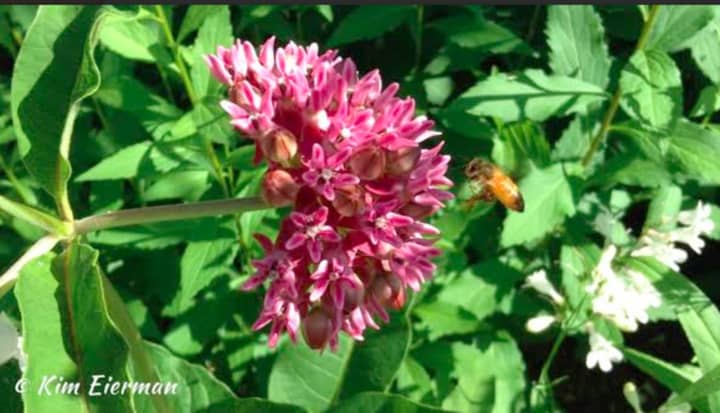Make a resolution for the New Year to create a “Pollinator Victory Garden” to help win the war on pollinator decline. Here are some ways you can help pollinators in your own landscape:
Plant a wide array of plants with different flower colors.
Different types of pollinators are attracted to different colors. While bees favor white, purple, blue and yellow flowers, butterflies prefer bright red, orange, yellow and purple blooms. Hummingbirds are enticed by red tubular flowers.
Choose plants with varied flower shapes and sizes.
Not all pollinators can access the same size or shape of flower. Long-tongued bees, like bumblebees, can access long tubular flowers. Honey bees and other bees with shorter tongues need more open flowers. Body size and strength also impacts which flowers can be accessed by which pollinators.
Include flowering trees and shrubs for pollinators.
Many woody plants are important to pollinators, and vice versa, and not just those woodies with showy blooms. Early bloomers like red maples and pussy willows are important source of nectar and pollen for bees, at a time of year when not much else is available.
Plant an ongoing pollinator buffet.
While honey bees can emerge at any time of year when the weather warms, native pollinators will emerge at different times and have different life spans, depending on the species. Make sure to have pollinator plants in bloom from early spring through late fall.
Plant quantities of each plant species.
Help pollinators find forage resources by planting masses of the same plant, or by planting a repeating pattern of each plant (think meadow-like garden).
Some pollinators will only use one plant species during a single foraging trip – help to keep them well fed.
Emphasize native plants in your landscape.
Our native pollinators have evolved with native plants. While some pollinators are generalists and forage on many different plants, others may have evolved to use a single plant species. Plant native and you will be supporting an entire ecosystem. For beekeepers and lovers of honey, don’t worry, the European honey bee can forage on many of our native plants.
Avoid pesticides to help pollinators.
Many chemical pesticides are injurious or lethal to pollinators. Neonicotinoids, a widely used class of pesticides, were once thought to be reasonably safe. Recent research has shown just the opposite to be the case. Keep in mind that some organic pesticides can also be detrimental to pollinators. Skip the spray, and instead, attract beneficial insects – nature’s pest control - into your landscape with native plants.
Encourage family, friend and neighbors to create their own Pollinator Victory Garden in 2016. Every landscape helps.
Kim Eierman, a resident of Bronxville, is an environmental horticulturist and Founder of EcoBeneficial! When she is not speaking, writing, or consulting about ecological landscapes, she teaches at the New York Botanical Garden, Brooklyn Botanic Garden, The Native Plant Center and Rutgers Home Gardeners School.
Click here to follow Daily Voice North Passaic and receive free news updates.


